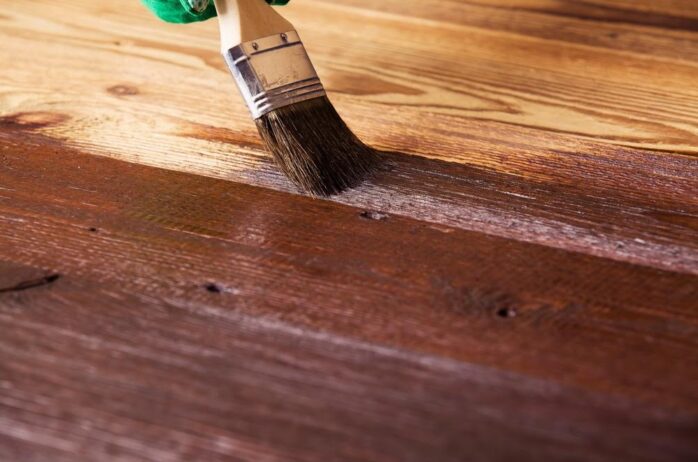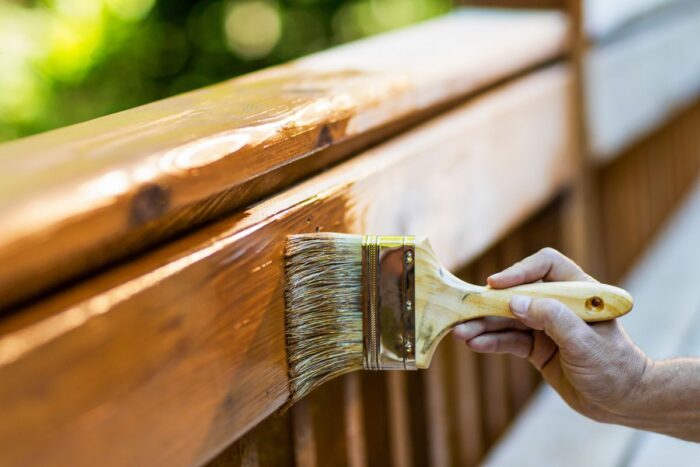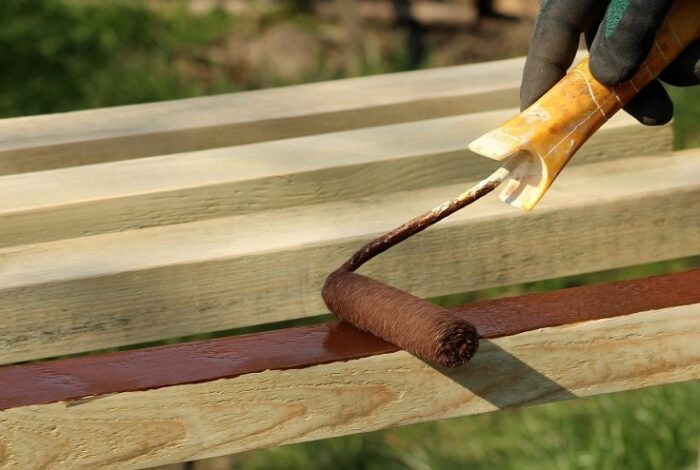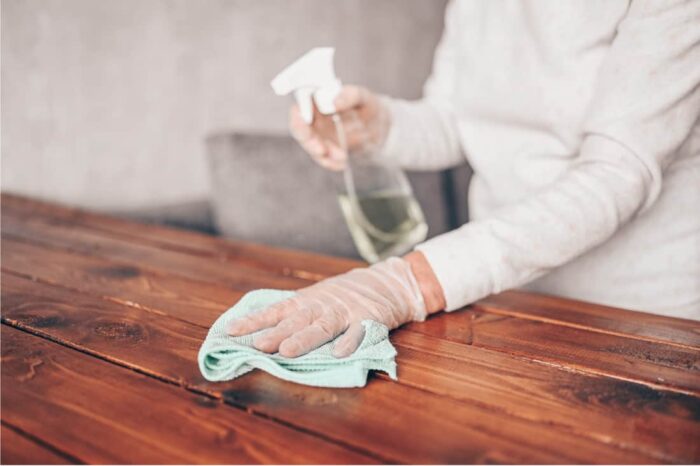
Pressure-treated wood has been a favorite exterior building material for decades. Pressure treating ensures that wood withstands the elements better, thereby extending its life. But the same process that makes pressure-treated wood so strong can also make the wood look unappealing over time. Then what? Should you paint it?
Plenty of professionals and DIY enthusiasts have been debating this question since pressure-treated wood first came to market. Some say you should never paint it. Others say that painting is fine. Still, others say that, if you need to do something, you are better off staining pressure-treated wood. So, who’s right? All of them and none of them.

They All Have Pros and Cons
All three options come with pros and cons. As such, it is not fair to say that one option is best for every scenario. Few things in life are that black-and-white. So rather than trying to assert that staining is always better than painting, a better approach is to look at the particular circumstances of a job and then make a decision from there.
What we can say unequivocally is that there are right and wrong ways to do things. If you are not going to paint or stain, you still need to take care of the pressure-treated wood to maximize its life. On the other hand, choosing to paint or stain also means learning how to do the job right. Otherwise, you could put a ton of work into refinishing your deck only to wind up with something you’re unhappy with.
Painting Pressure-Treated Wood
Seeing that the main topic of this post is painting pressure-treated wood, let us start there. People generally advise against it due to the nature of the material. Pressure-treated wood is so named because it is treated with water and preservatives under high pressure. Applying pressure during treatment forces the water and chemicals to work their way deeply into the wood. That way, they extend the life of the material as long as possible.
The problem is that paint does not normally adhere well to pressure-treated wood because of the water and preservatives. Unlike stain, paint is not designed to penetrate the surface on which it is placed. It’s designed to bond to that surface, essentially acting as an entirely separate layer that sits on top.
Water and preservatives can inhibit the bond between paint and wood to the extent that it is not strong enough to hold up year after year. The result is paint that begins to peel after a very short time.

Preparation Is Everything
Does that mean you cannot paint pressure-treated wood and still end up with a quality job? No, not at all. A good quality paint job is possible if you know what you are doing. Professionals do it all the time. According to Dallas Paints, the key to a job done right is surface preparation. And that starts with a good cleaning.
Any surface should be cleaned prior to painting. However, cleaning is so much more important with pressure-treated wood because the material already resists paint. To do it right, you need to use a combination of warm water, a good detergent, and a stiff brush. A little elbow grease never hurts, either. The goal is to remove all dirt and debris.
After cleaning, you need to let the wood thoroughly dry. This could be difficult if you live in a humid climate, or you are attempting to do the job at a time of year when you get a lot of rain. The thing is that pressure-treated wood can take months to dry. So your best bet is to do the job during the driest season of the year. If necessary, renting a commercial propane heater is one way to dry out the wood quickly.
With proper preparation and a good primer, painting pressure-treated wood can work out well. If you skimp on preparation, you are probably going to be sorry later on. The same goes for skimping on paint. Invest in a high-quality primer and topcoat designed to be used on exterior wood.
Staining Pressure-Treated Wood
Staining is the preferred way to go among people who don’t want to put all the work into painting. The advantage of stain is that it is engineered to soak into wood. Though you could have problems with cheaper stains, a quality stain should penetrate pressure-treated wood without issue. You might even look for a stain product that has been specifically designed for pressure-treated wood.
For the record, surface preparation is still a requirement. You still need to thoroughly clean the wood and let it dry. But you don’t have to wait months for the wood to dry out. If it’s dry to the touch, you should be fine with stain. Also note that you are likely to need two or three coats to get the finish you want. Remember that stain soaks into the wood. A single coat probably isn’t going to cut it.
Also, remember that stain rarely looks like the image on the can when it finally dries. The finished look will depend heavily on the condition of the wood itself. Plan on the dry color being slightly darker unless you are applying it to fairly new lumber.

Leaving Pressure-Treated Wood Alone
You can always leave pressure-treated wood alone. If you do not mind what it looks like as at ages, there really is no need to finish it. The preservatives in the wood will protect it against the elements for decades. That being said, you will probably want to wash the wood every now and again in order to fight mold and airborne dirt.
And there you have it. Is painting pressure-treated wood a good idea? That is entirely up to you. Pressure-treated wood can be painted as long as you do it the right way. If you do not want to put in the work, staining or just leaving it alone are both easier.











